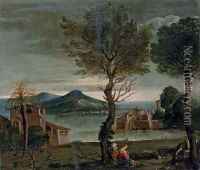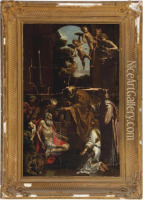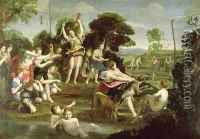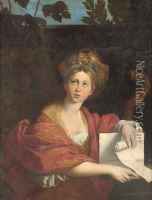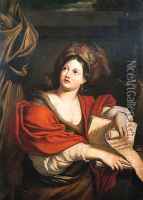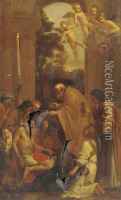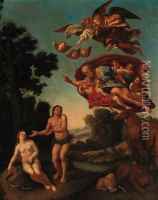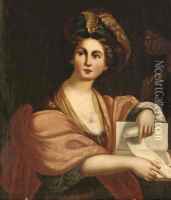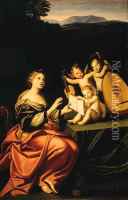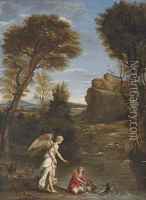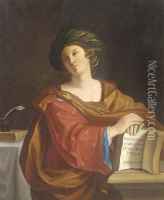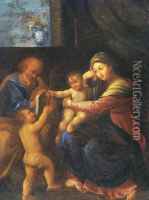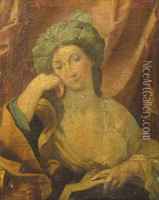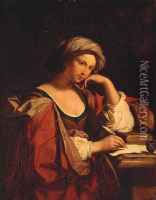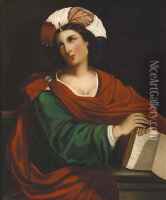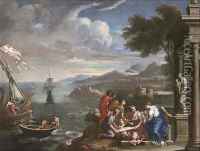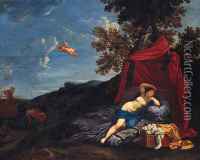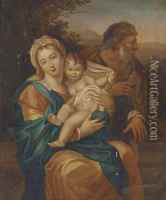Domenico Zampieri (Domenichino) Paintings
Domenico Zampieri, known as Domenichino after his short stature, was an Italian Baroque painter of the Bolognese School, born on October 21, 1581, in Bologna, Italy. He was a student of the prominent artists Agostino Carracci and later Ludovico Carracci at the Accademia degli Incamminati, which was instrumental in his foundational training and artistic development. Domenichino's work was profoundly influenced by the Carracci's emphasis on a classical approach to painting, which was a reaction against the mannerist style prevalent in the late Renaissance.
Domenichino moved to Rome in 1602, where his talent quickly brought him into the circle of the most prominent artists and patrons of the time, including Annibale Carracci and Cardinal Scipione Borghese. His first major commission was for the decoration of the Palazzo Farnese in Rome, where he collaborated with Annibale Carracci and others.
One of Domenichino's most famous works is the series of frescoes in the Polet Chapel in San Luigi dei Francesi in Rome, which he completed in 1612. These works exhibit his mastery of composition, his use of clear and harmonious colors, and his ability to convey narrative and emotion, which became hallmarks of his style.
In 1617, Domenichino began work on what is considered his masterpiece, the frescoes in the Cappella del Tesoro in the cathedral of Naples, depicting the life of Saint Januarius. This ambitious project was marked by dramatic compositions and a robust naturalism, which demonstrated the influence of Caravaggio's revolutionary use of chiaroscuro and realistic depiction of figures.
Despite his successes, Domenichino's career was marked by controversy and rivalry, particularly with the painter Giovanni Lanfranco, who challenged his commissions and criticized his work. These disputes sometimes overshadowed his artistic achievements and caused him distress throughout his career.
Domenichino's influence extended beyond his lifetime, as he was revered in the 17th and 18th centuries for his classicizing style, which was seen as an ideal model for history painting. His work was particularly admired by the French Academy, which promoted his style as a counterpoint to the more flamboyant Baroque of artists like Peter Paul Rubens.
Domenichino died on April 15, 1641, in Naples. His legacy is significant in the history of Italian Baroque painting, and he is remembered for his disciplined approach to composition, his storytelling prowess in fresco cycles, and his influence on subsequent generations of artists.
